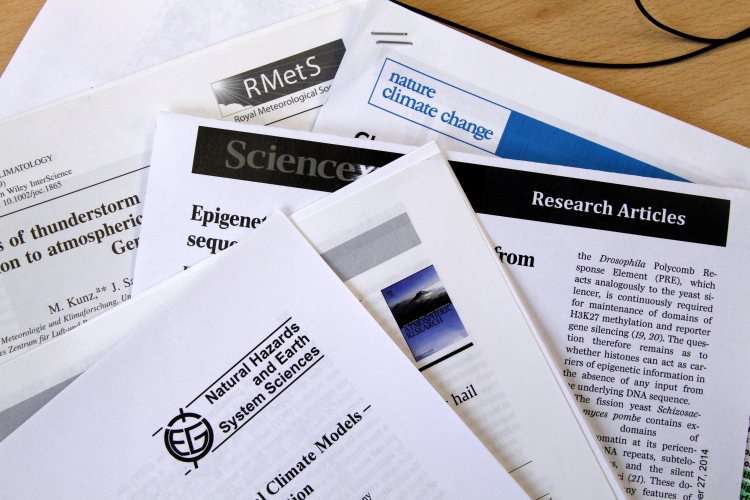Neue Veröffentlichungen!
Martius, O., Hering, A., Kunz, M., Manzato, A., Mohr, S., Nisi, L., and Trefald, S. (2017): Challenges and recent Advances in Hail Research – A report from the 2nd European Hail Workshop. Bull. Am. Meteorol. Soc., doi:10.1175/BAMS-D-17-0207.1.
Abstract:
Severe hailstorms pose a significant threat to buildings, crops, and vehicles. At the same time, these storms are difficult to predict, model, and observe. About 130 representatives from the academic community, operational weather services, and the insurance industry met in Bern (Switzerland) for three days to discuss the current state of hail research and to identify key research gaps and future challenges.
Kunz, M., Blahak, U., Handwerker, J., Schmidberger, M., Punge, H. J., Mohr, S., Fluck, E. and Bedka, K. M. (2017): The severe hailstorm in SW Germany on 28 July 2013: Characteristics, impacts, and meteorological conditions. Q. J. R. Meteor. Soc. doi:10.1002/qj.3197.
Abstract:
At the end of July 2013, a series of severe thunderstorms associated with heavy rainfall, severe wind gusts, and large hail affected parts of Germany. On 28 July 2013, two supercells formed almost simultaneously in southern Germany, from which only the more southerly cell produced hailstones up to 10 cm in diameter on a hailswath approximately 120 km long and 15–20 km wide. For the insurance industry, this event with losses of more than EUR 1 billion was one of the most expensive natural disasters that has ever occurred in Germany.
This paper investigates the creation, temporal evolution, and effects of the most severe supercell that day by considering and merging radar and satellite data, eyewitness reports, insurance loss data, and numerical model studies. Observations of hail at ground level fit very well with a cold–ring-shaped structure in the cloud top brightness temperature observed by a geostationary satellite imager. Various simulations conducted with the convection-permitting COnsortium for Small-scale MOdeling (COSMO) revealed that the track of the hailstorm could be reproduced only when convection was triggered artificially by two warm bubbles that produced single cells that were precursors of the supercell. The model results suggested that the supercell developed near a pre-existing single cell through low-level flow convergence in an environment with moderate CAPE, but substantial wind shear and storm-relative helicity, both of which persisted for several hours in the area in which the supercell moved.

